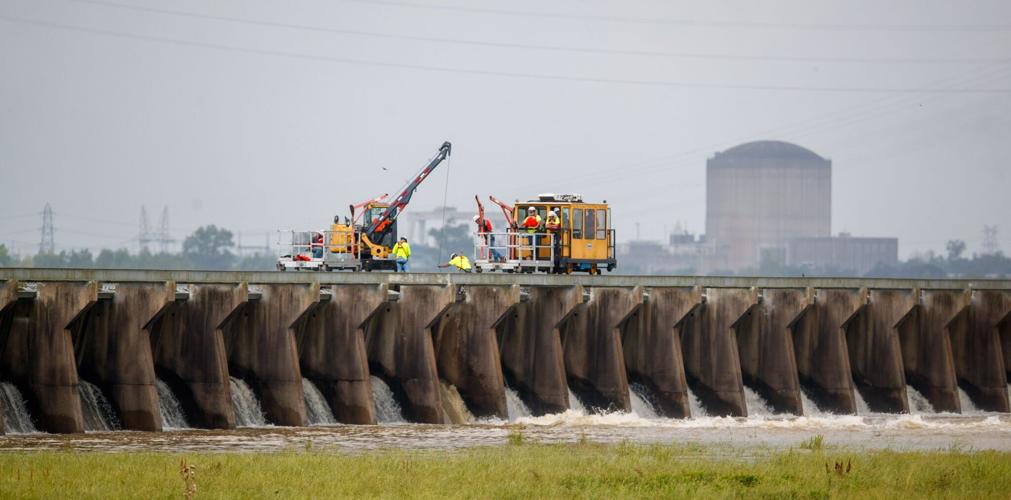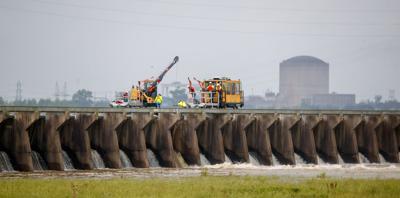The U.S. Army Corps of Engineers does not expect to open the  as the Mississippi River is no longer expected to crest at a level that would require water to be diverted into Lake Pontchartrain.
New Orleans Corps spokesperson Matt Roe said Tuesday that internal estimates of the river's flow rate will be slightly below the 1.25 million cubic feet per second that typically trigger an opening to reduce pressure on downriver levees.
"Now that we're close to what we're expecting, the actual measurements are coming in lower," Roe said in an interview.Â
His comments came after recent forecasts that rising river levels would of the diversion. Earlier this month, the Corps ran a test operation on the spillway, opening one of its 350 bays.
The National Weather Service forecasts as of Tuesday show the river cresting at the Carrollton Gauge in New Orleans at 16.6 feet starting May 2. A reading of 17 feet typically translates to the flow rate that would trigger an opening.Â
As of Tuesday, the flow rate was 1.245 million cubic feet per second and is expected to stay around that figure for the next few days as the river crests, according to the Corps.Â

People fish in the Bonnet CarrŽ Spillway as the U.S. Army Corps of Engineers conducts a test opening in Norco, La., Monday, April 21, 2025. The test comes as the Mississippi River nears flood stage and could lead to the first official opening of the spillway since 2020 if conditions warrant. (Staff Photo by David Grunfeld, The Times-Picayune)
The spillway, located in Norco, connects the river to Lake Pontchartrain through a system of floodways and bays that are opened when needed. It was built nearly a century ago, following the great flood of 1927.Â
The Corps would typically announce a recommendation for opening the spillway two days before an operation, the approximate time for water at Red River landing to flow down to the New Orleans gauge. At that point in the river's course, there are no other outlets for the water.Â
Last opened in 2020, the Bonnet Carré alleviates pressure on the levee system to prevent any potential breaches. But it is also controversial because the rush of fresh water into the lake can harm the region's fisheries.Â
The Mississippi Sound Coalition, representing local governments, fishers and the tourism industry had urged the Corps earlier this month urging them to limit any spillway opening as much as possible.Â
For the past few months, the river has been rising, which is common for the springtime as rainfall from storms in the Midwest and South trickle down to Louisiana. High water season historically stretches from March through May, Roe said, with late April and early May as the peak. Rain conditions in the Mississippi Valley will affect downstream water levels for the rest of the rainy season.Â
When the river rose about 15 feet at the Carrollton gauge earlier this month, the Corps entered into a Phase II , which mandates daily patrols of levees to note seepage or any other issues.

A couple and their dog relax on a blanket beside the Mississippi River at The Fly in Audubon Park as the river nears flood stage in New Orleans. The U.S. Army Corps of Engineers announced on Tuesday April 29, that is does not expect to open the Bonnet Carre Spillway as the Mississippi River is no longer expected to crest at a level that would require water to be diverted into Lake Pontchartrain. (Staff photo by David Grunfeld, The Times-Picayune)







